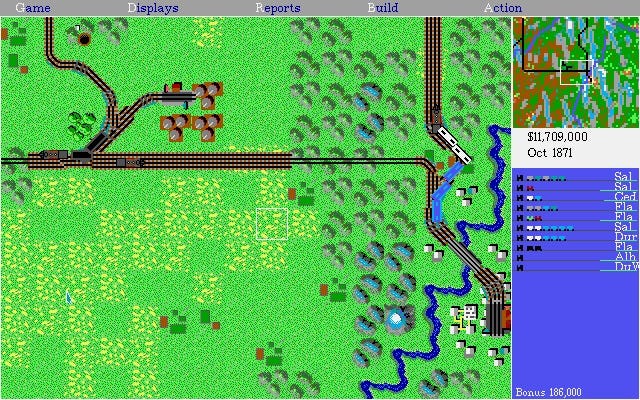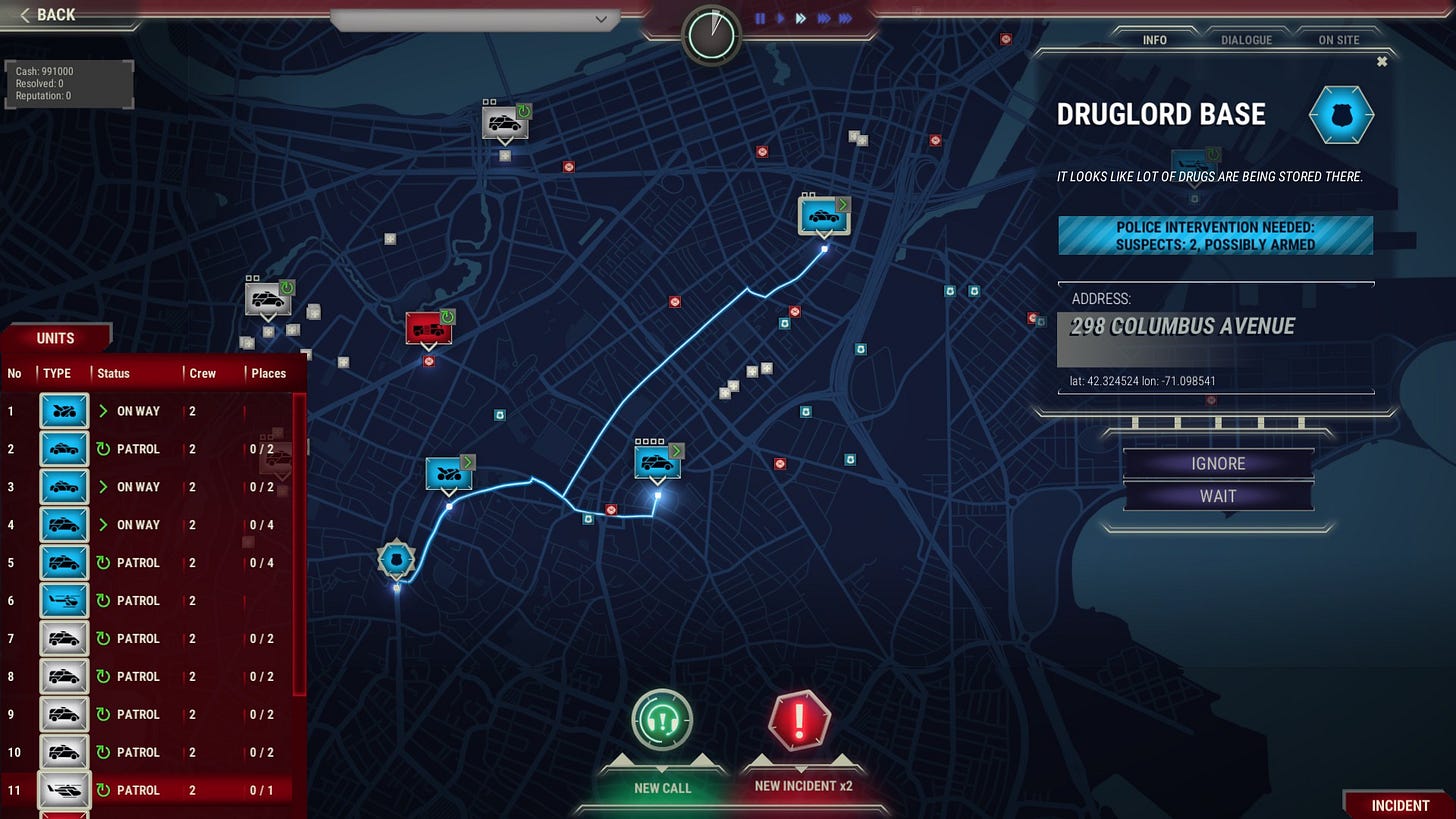Don’t make the game for yourself!
If you don't believe me, listen to Sid Meier - he was on more covers of fantastic games than all other game designers combined.
Partly because there are not many other game designers’ names on game covers, but, hey, not everybody has made the game about the whole human history.
But before we get to his pieces of advice, let me tell you the most useful thing I learned when I was a student. And no, I haven’t been studying game development or anything related, but journalism (in Polish, so please forgive me for all the grammar mistakes here).
While studying, I often heard the following advice: “If you particularly love any sentence you’ve written, delete it.” Professors loved to say that, students (me included) hated it. “Why should I delete something that is the best in my text?” – I was asking myself.
After some time, I internalized and embraced that advice. Such a sentence was usually a show-off - it contained some original metaphor, an uncommon word, an unusual construction. However, it rarely served the text as a whole and - above all - the reader.
Such attitude helps to avoid the trap that a lot of creators fall into – pleasing your ego, instead of your audience. Later on, I learned that it was a quite universal rule for writers, repeated by many successful authors.
“Kill your darlings, kill your darlings, even when it breaks your egocentric little scribbler’s heart, kill your darlings.” — Stephen King, “On Writing: A Memoir of the Craft”
What about video games? Does this rule apply here, too?
In general – yes, but I think this advice should be framed a little bit differently. And here we’re getting back to Sid Meier.
If this name somehow doesn’t ring the bell: Sid Meier is one of the most recognizable designers ever, known for many groundbreaking titles like Civilization, Pirates, and Railroad Tycoon. In this last game, he had a design issue described in Sid Meier's Memoir!: A Life in Computer Games book (I wholeheartedly recommend it!).
One of his coworkers, Bruce, gave him feedback about the unfairness of the gameplay of Railroad Tycoon. His bridges kept being washed out in floods. Sid explained that it’s not uncommon in this genre - SimCity has a variety of natural disasters – and it’s grounded in reality as a legitimate concern for rail companies.
But Bruce had something indisputable to say:
“When my bridge is knocked down for no reason, I’m not having fun.”
As a designer, you never should discuss such a sentence. Maybe it’s not the fault of the design itself. Maybe it’s a matter of presenting the information, showing feedback, or balancing it properly. But it’s never players fault that they aren’t having fun.
Let’s listen to what Sid Meier has to say about it:
“He was right, of course. It seems like players ought to appreciate the hardships we throw at them – that the whole reason they play is to prove their worth. But it’s not. People play games to feel good about themselves, and random destruction only leads to paranoia and helplessness. Thwarting an enemy’s attack feels worthy, but recovering from an ambush is a relief at best. Unfortunately, the flip side of that imbalance is that the designer feels powerful and clever, which is what makes these unexpected setbacks so tempting to implement.
As major plot points, they’re practically universal: your trusted partner steals the treasure; the damsel who begged for help is a double agent; the noble scientist has a secret weapon to wipe out mankind; the princess is in another castle. Or in other words, the player did everything the designer asked of them, and then the rules changed for no reason. A sudden reversal of fortune is only exciting or dramatic when it happens to someone else. When it happens to you, it’s just a bummer. The player may soldier on out of defiance, or irritation, or just a basic acceptance that this is how games are supposed to be, but their experience has been diminished nonetheless.
I had recognized these pitfalls when they were part of a linear storyline, but Bruce’s comment helped me see that the same principle applied to even the tiniest plot points in open-world games. All random obstacles are, on some level, crafted with an “imagine the look on their faces when” mentality, which can also be loosely translated as, “Hey! Hey! I designed this! Look at the big brain on me!” The game isn’t supposed to be about us. The player must be the star, and the designer as close to invisible as possible.”
The golden rule that Sid Meier coined for himself is to “make sure the player is the one having the fun.” Not the designer or game maker, but the player.
Of course, it’s wonderful if you can have a great time in your own game. It’s an incredible feeling when it happens. But what really matters is the players' experience.
Maybe, you as a game creator are the only person who can enjoy the game as nobody else cannot understand it fully due to ineffective onboarding or lack of tutorial.
Or you might be tired of the gameplay you work on after playing hundreds of hours. You might be tempted to change something in the game just to feel different and fresh for you. However, players may perceive it differently – maybe, the game is already fun and you cannot see that after getting so used to it. Maybe, it’s already too complicated, and adding new stuff will only enhance this problem.
You won’t know any of those things until you won’t have player experience in the center. And that’s why it’s so important to playtest your game with actual players - as early as possible and as often as possible.
I made this mistake a couple of times, one of the examples was when I worked on DLC for 911 Operator, a game about managing emergency services. The DLC was called Search and Rescue and I was striving to prove to others and myself that I could be a great game designer (at that time I was sort of a jack of all trades in the small indie studio where its founder was the main designer of the game).
The core loop of the game was to send the correct emergency units to the various incidents on the map (so it was a sort of unusual RTS).
I proposed a feature for special incidents that require players to search an area. Such incidents spawned a grid of squares around them. In one of those squares was the searching object (a missing child, dangerous criminal, etc.).
This mechanic requires a lot of micromanaging if you want to try to find an object by yourself. However, I intended to make it sort of risk/reward mechanic - you could send the team to the center of this incident and let them do the job automatically or manually send your teams to selected squares.
In the second option, you could get lucky and finish the assignment quicker - when you selected a square with a missing person or object, it was instantly done. However, this option was more random and cost the player a lot of attention which was needed in the rest of the city as well. And sometimes it was even more time-consuming if the damn criminal was hidden in the last undiscovered square.
I was quite proud of this feature. It was impactful during gameplay and quite a visible element of this DLC, highlighted in trailers and screenshots. However, what did players think about this feature? Let’s look at Steam reviews:
Yes, at least some of the players totally missed the option that they could send teams to the center of the incident to let them solve it automatically. So they couldn’t feel that there was any significant decision to make.
I knew how the mechanic worked, so I’d never seen this issue in my playthrough. If we run more playtests or I would focus more on player perspective, I would probably see the need for more communication by UI or text.
But hey, Sid Meier made some mistakes, too! ;) Speaking of which, this is how he solved the issue of bridges destroyed by floods:
“The key difference between a gameplay challenge and a betrayal, I realized, was whether the player had a fighting chance to avoid it. So rather than eliminate the flooding, I introduced different kinds of bridges. A wooden bridge was cheap, and would get the railway up and running right away. A fancy stone bridge was more expensive, and took longer to build, but would be impervious to flooding. By giving the player control over how much risk they would tolerate, the floods not only stopped feeling unfair, they became a source of genuine reward. To imagine their bridge emerging whole from the receding water line felt better than if it had never flooded at all.”
And this sounds so much more interesting than the initial design!
So next time, don’t get angry at players who don’t have fun in your game! This doesn’t mean that you’re a bad designer or they can’t understand the genius of it.
Try to find the underlying reason and come up with the solution. In the long run, it will make your game better. For everyone, even for you and your ego. What is better for the ego, than actual praise for players?









